If there’s something film fans can generally agree on, it’s that The Matrix is a masterpiece – a sci-fi cyberpunk classic whose eye-popping action set-pieces still sizzle the synapses in all the right ways. More debatable, though, is the consensus on sequels The Matrix Reloaded and Revolutions. Released six months apart in 2003, they initially received a mixed reception that has since gone down in history as something of a disappointment. In many ways, though, they’re both pretty spectacular – especially in the action department. (The back-to-back action freak-out of the Merovingian fight and the freeway chase in Reloaded is pure, mind-blowing Matrix.) Beyond that, they also make interesting choices with the ‘chosen one’ narrative, introduce some cool new characters (Niobe! Link!), and open up our understanding of both the Matrix and the real world in fascinating ways. The problem is, they’re also needlessly hard to follow.
The Matrix sequels are a bit like the Star Warsprequel trilogy: they have a complicated legacy, they used all the shiny new digital tools that early-‘00s filmmaking had to offer, they’re experiencing something of a cultural re-appraisal, and manage to tell great stories in not-so-elegant ways. In the case of Reloaded and Revolutions, it’s the Wachowskis' somewhat admirable predilection for verbose philosophical waffling that makes the nuts-and-bolts story frustratingly difficult to keep track of, in a way the first Matrix never was. But with upcoming four-quelThe Matrix Resurrections on the horizon, there’s never been a better time to revisit Reloaded and Revolutions, appreciate everything they did (or at least attempted to do), and understand how it might tee up what comes next.

If you’re ready to tumble down the rabbit-hole once more, take the red pill with us and let’s explore how it all goes down.
The Matrix Reloaded: explained!

As Reloaded begins, everything is starting to come to a head: the war between the humans and the machines is ramping up as the Sentinels start drilling towards Zion (the cavernous underground city where all the freed humans live), and what we soon come to learn is the natural cycle of the Matrix is approaching its end-point too. Meanwhile, an increasingly powerful Neo (Keanu Reeves) is having dream-visions of Trinity (Carrie-Anne Moss) dying, which is – to be clear – a bad thing. When he heads into the Matrix and consults the Oracle (Gloria Foster) on all of the above, she tells him that he needs to reach ‘The Source’ of the Matrix – cue plenty of fights, a bit with an orgasm-inducing cake, and an epic freeway chase, all in service of getting him there.
When Neo arrives at The Source, he meets The Architect (Helmut Bakaitis) – the boring, pretentious guy so brilliantly parodied by Will Ferrell at the 2003 MTV Movie Awards – aka the program that designed and created the Matrix. The Architect drops a bombshell on Neo: he’s not the first ‘One’, this is the sixth incarnation of the Matrix, and his arrival at this point is all by design. He explains, in his uniquely verbose fashion, that The Matrix is an inherently flawed system – it’s such a complex program that it eventually breaks down every 100 years or so and needs to be reloaded. As The One (“the sum of a remainder of an unbalanced equation”), Neo has a difficult choice to make: be complicit in reloading the Matrix, allow Zion to get destroyed by machines, and choose a selection of people to be freed to repopulate Zion, perpetuating the existing system; or, do nothing and allow the Matrix to crash, killing all the humans connected to it, which coupled with the machine destruction of Zion would mean the end of the human race. Bummer.
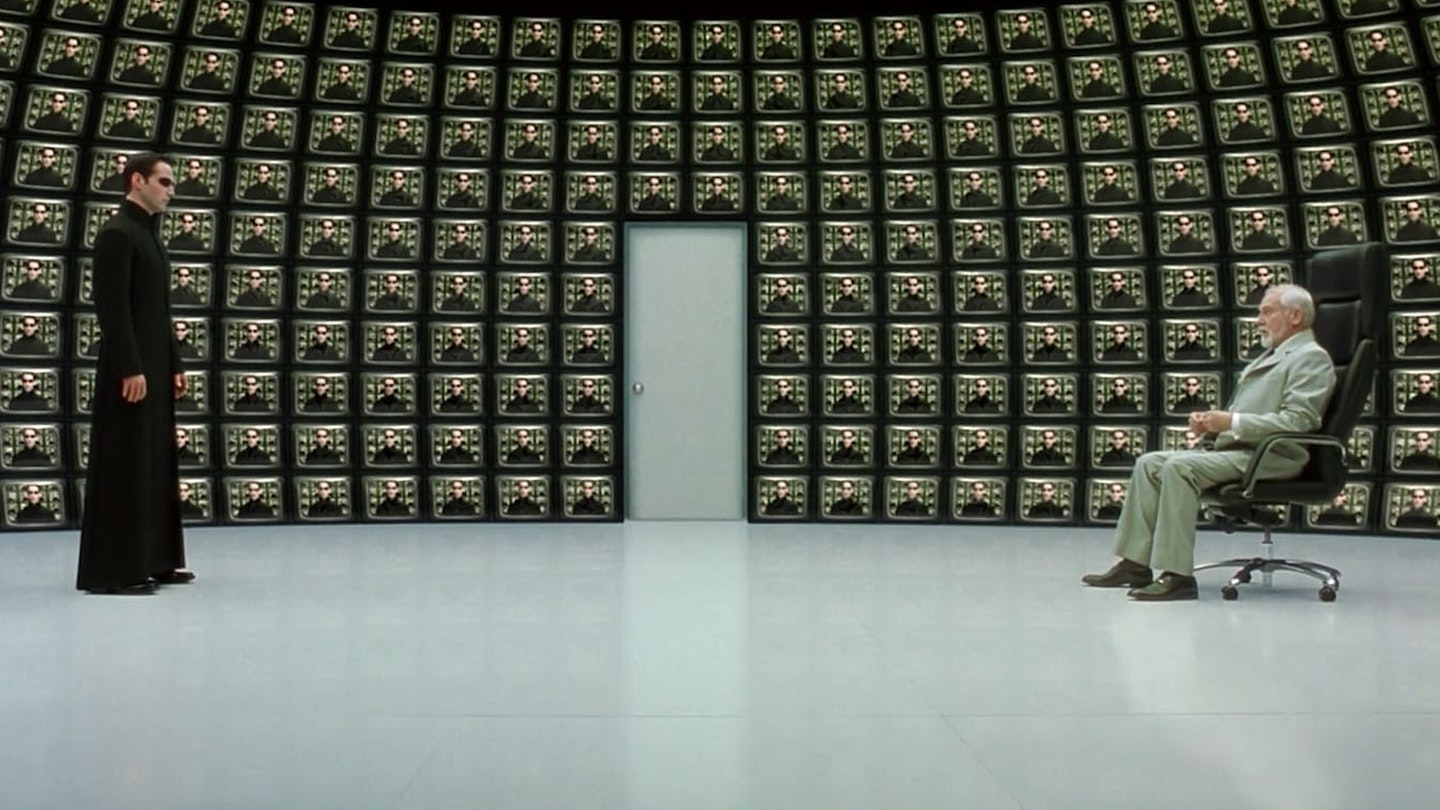
Neo effectively chooses the second option – he heads back into the Matrix to save Trinity, who’s about to experience the death he’s been dreaming of, pulls some bullets right out of her gut, and they unplug back into the real world. The Nebuchadnezzar is attacked and destroyed by Sentinels, until Neo pulls out his ace card: his powers are now crossing over into the real world, and he’s able to destroy a handful of Sentinels with his mind, the effort of which puts him into a coma.
And then comes the cliffhanger. While all of this has been happening, Agent Smith (Hugo Weaving) has been spiralling out of control. After his encounter with Neo in The Matrix, he’s now a rogue program and is no longer part of the system – effectively, he’s become a virus, an out-of-control bit of software, replicating and duplicating himself all through the Matrix by plunging his hand into people’s chests and transforming them into versions of himself. One of those people was Bane (Ian Bliss), a member of the Zion resistance effort, and when Bane is zapped back from the Matrix to the real world, it’s not his consciousness that’s downloaded – it’s Smith, hiding in Bane’s body, now in a coma on the bed next to Neo.
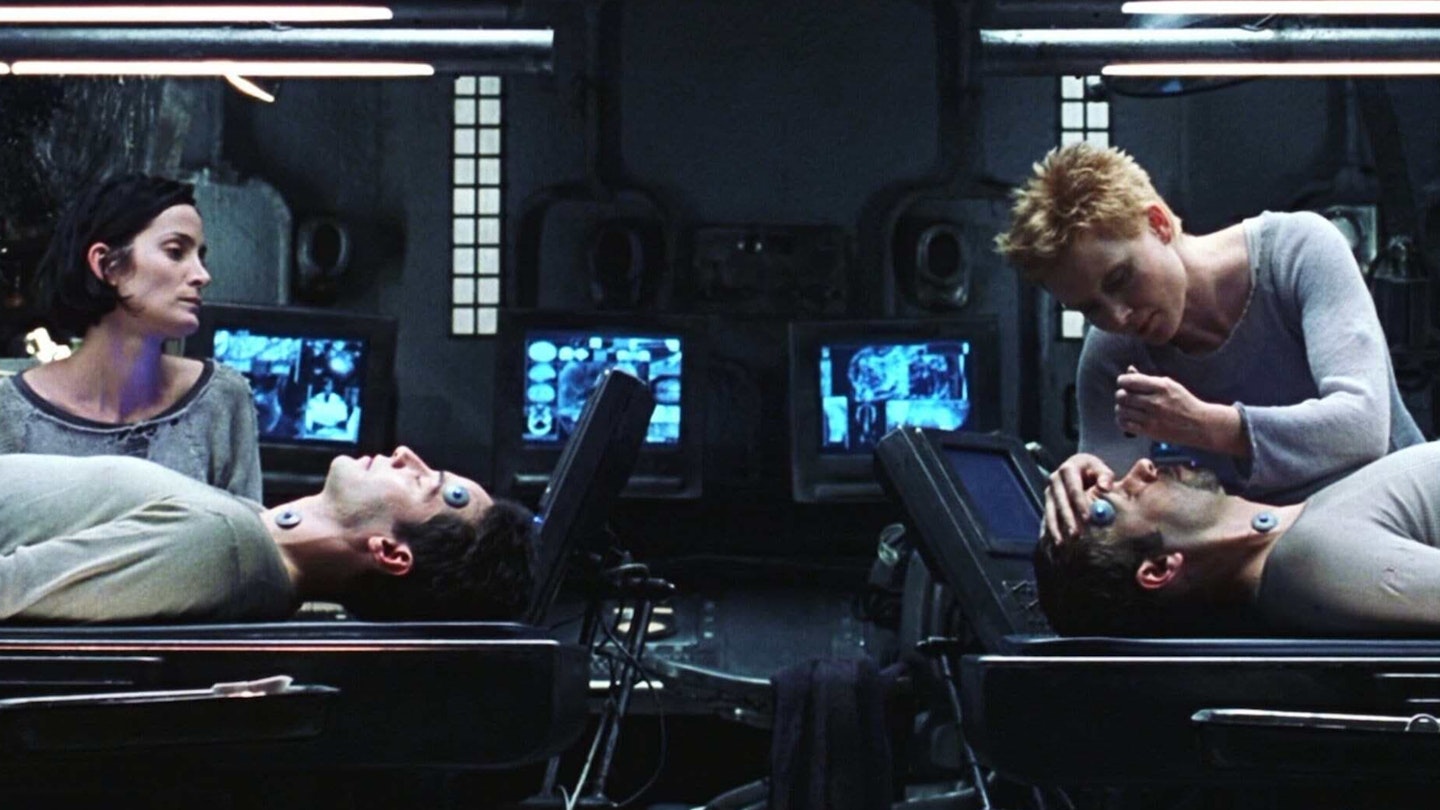
Roll credits!
The Matrix Revolutions: explained!

The Matrix Revolutions primarily deals with the fallout of Neo’s choice at the end of Reloaded – not only are the machines still on their way to destroy Zion, but Neo has to work out how to save everybody in the Matrix, avoid the extinction of the human race, and deal with the fact that a murderous Agent Smith is now running around in the real world trapped in a fleshy human cage.
It does, frankly, get off to a slow start. While Neo’s comatose body is in the real world, his mind is somewhere else – a limbo-like place between the Matrix and reality, a train station called Mobil Ave. (Mobil, limbo, get it?) It’s a place controlled by the Merovingian – an old, old Matrix program who appears as a snooty Frenchman – who has a grudge against Neo thanks to convoluted events in Reloaded. While Morpheus (Laurence Fishburne) and Trinity fight their way through the Merovingian’s S&M cybergoth disco Club Hel (look, this isn’t the trilogy’s high point) to earn Neo’s freedom, Neo befriends a young Indian girl named Sati (Tanveer K. Atwal) – the ‘daughter’ of two programs who claim the ability to love. Aww.
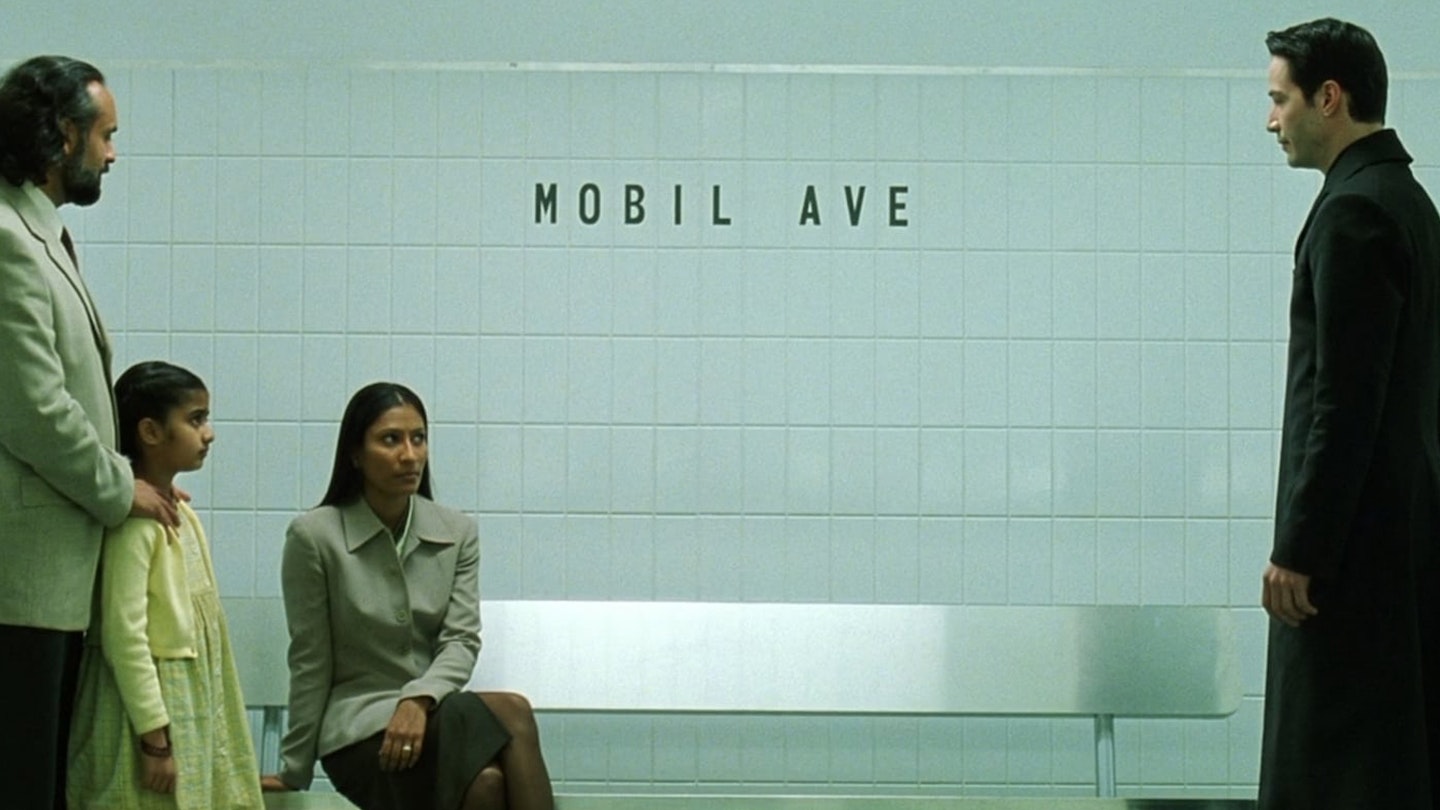
Rescued from limbo, Neo does what he always does – he goes to see the Oracle (now played by Mary Alice, after the death of original actor Gloria Foster), who tells him that Smith’s rapid self-proliferation threatens the destruction of the machine world and the Matrix, as well as Zion. And since his power has been growing in tandem with Neo’s – “the result of the equation trying to balance itself out” – it’s only he who can stop Smith once and for all. When Neo leaves the Oracle’s place, Smith turns up and assimilates her and young Sati, absorbing the Oracle’s power.
Waking up in the real world, Smith-Bane starts cracking up and goes on a murder-spree. When he attacks Trinity, Neo fights back and soon realises who he’s really brawling with – only for Smith-Bane to burn Neo’s eyes out with a frayed electricity cable. Ouch. Since Neo’s powers now extend to the real world, he’s still able to see anything machine-based (Smith included), this time not as green Matrix code but as glowing golden light. Neo caves Smith-Bane’s head in with a pipe, and he and Trinity fly off to the machine city together to try and stop the war for good. Meanwhile, Zion’s shipyard is decimated in a ferocious Sentinel attack – a standout 25-minute action sequence – and the survivors huddle in the caverns below, waiting for the next wave of destruction.
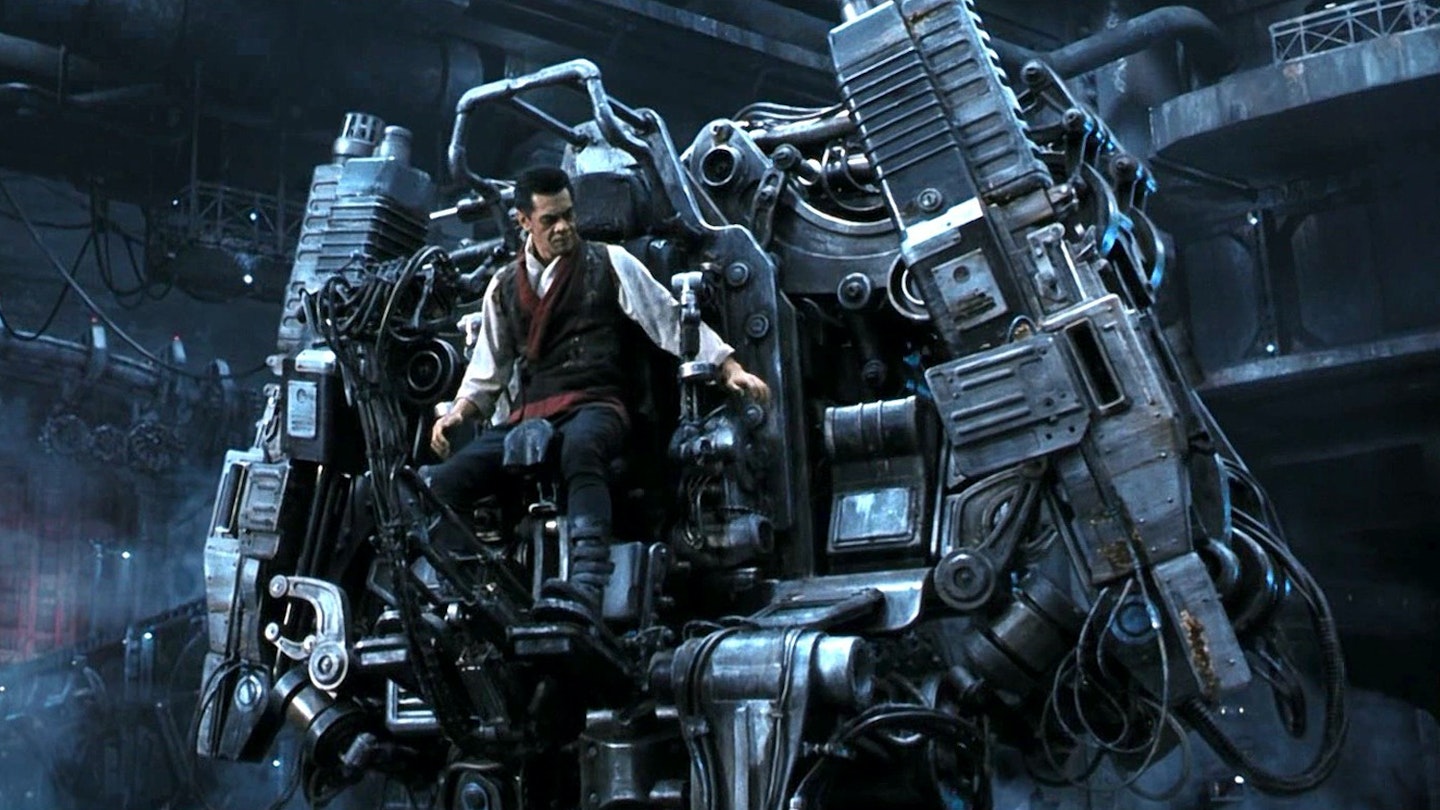
Neo and Trinity crash-land in the machine city, leaving Trinity impaled on metal pipes – she gives Neo one last kiss before she dies. Neo goes on to confront the machines’ hive-mind leader (Deus Ex Machina, aka ‘God in the machine’), tells them he’ll defeat Smith in exchange for peace in Zion, and he’s plugged back into the Matrix for the burliest brawl of all. In a city overwhelmed with Smith clones, the pair engage in an epic showdown, but since they’re equally matched, neither wins. Realising what he has to do, Neo chooses to be assimilated by Smith – allowing Neo (and Deus Ex Machina) to destroy him from the inside, exploding all the Smiths as they glow with pure white Source light. A happy ending, then – or not quite, since the effort of it all kills Neo.
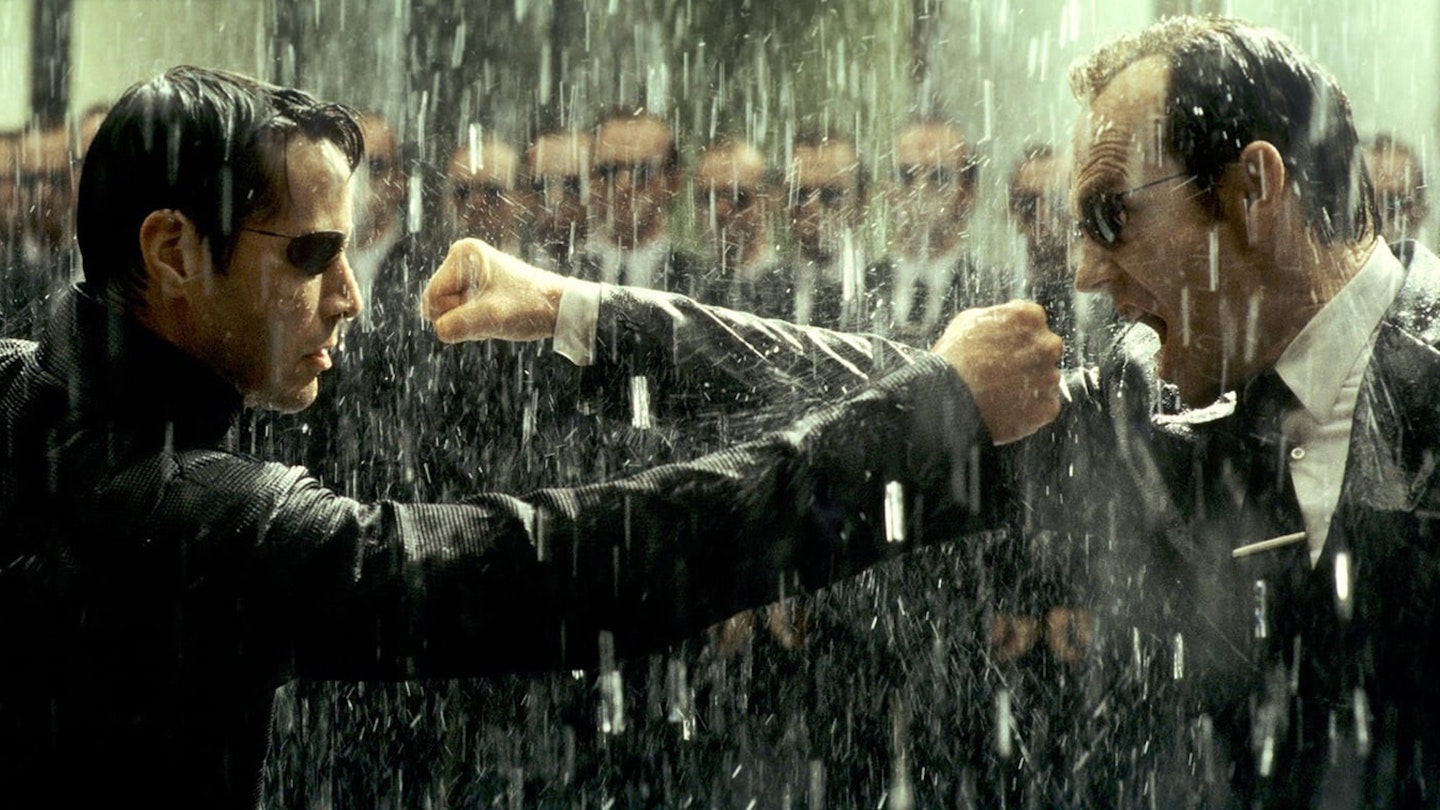
As Zion celebrates, the Matrix is – indeed – reloaded in a new version with a glowing, colourful sky. The Oracle, now reverted back to her non-Smith form, watches the sunrise and is approached by The Architect, who questions whether the newly-brokered peace will last, but confirms that humans who want out of the Matrix will be given their freedom. Sati sits next to the Oracle and asks whether they’ll ever see Neo again, and The Oracle responds: “I suspect so. Someday.”

The end!
TL;DR
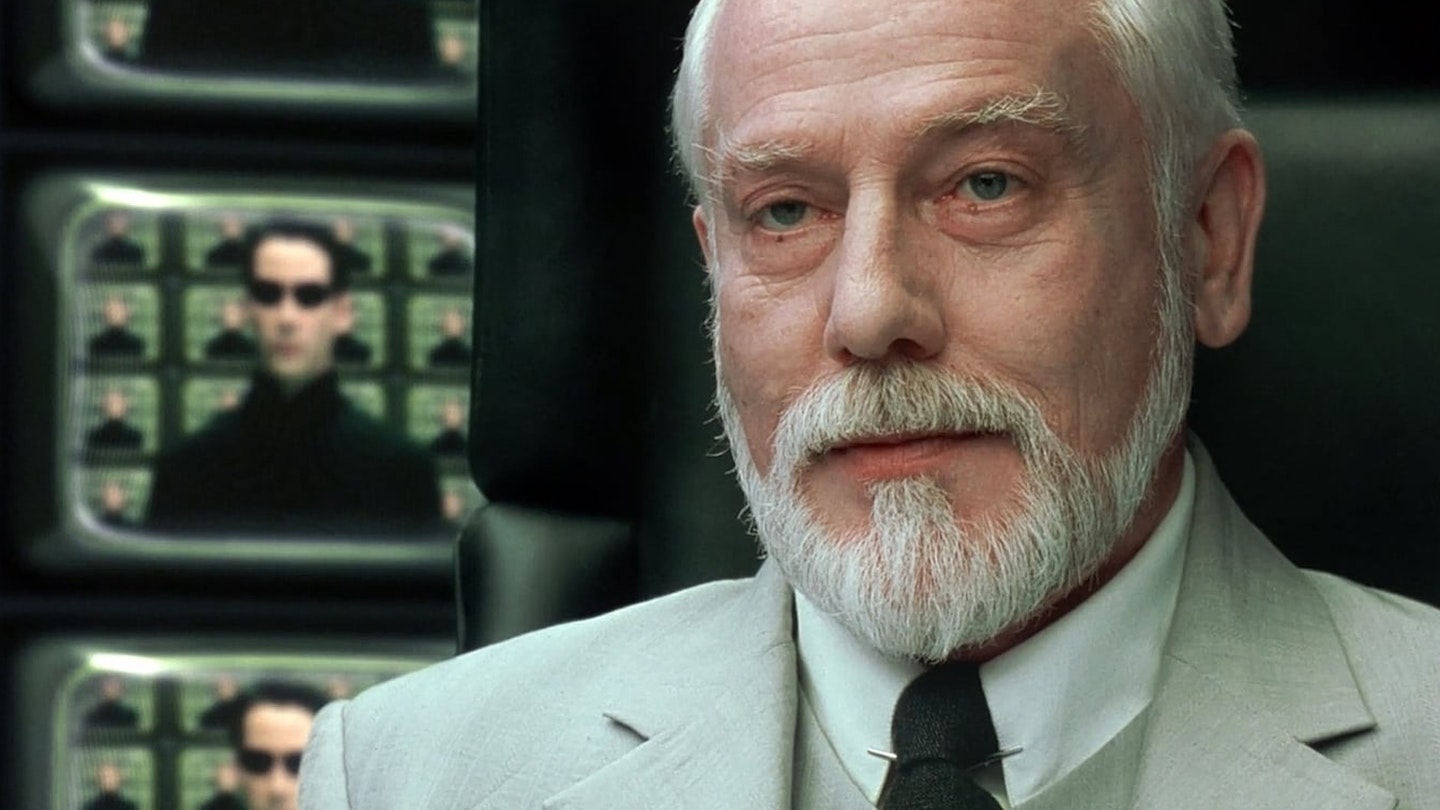
The machines wage war on Zion. Neo breaks the cycle of his predecessor ‘The One’s and chooses not to reload the Matrix. The rogue Agent Smith proliferates out of control threatening the survival of both man and machine. Neo brokers peace with the machines by agreeing to take out Smith, and dies in the process. The Matrix is reloaded in friendlier form, and a fragile peace between humanity and the machines is established. Simple enough, right?
What does it all mean for Resurrections?
That’s the big question. The truth is, nobody knows what’s coming in Resurrections (except returning director and co-writer Lana Wachowski, and her cast and crew) but there are plenty of clues in the trailer.
For one, it’s reasonable to assume that the film will take place in the new, seventh incarnation of the Matrix we see at the end of Revolutions – not only because that’s where the original trilogy leaves us, but because so much of the Resurrections trailer is bathed in the kind of glowing orange sunset light that defined the look of the Matrix’s latest iteration. Somehow, Neo and Trinity are back in this new Matrix – there’s a blink-and-you’ll-miss-it shot of a post-Revolutions eye-sizzled Neo apparently being healed up by the machines in the Resurrections trailer, so it’s possible the pair may have been revived and jacked back in.
But there are also new characters who seem to be fulfilling similar functions to those from the first film – particularly, Yahya Abdul-Mateen II as a younger Morpheus, and Jessica Yu Li Henwick in a role that seems particularly Trinity-esque. If Reloaded’s Architect speech taught us anything (beyond the fact that over-cooked philosophical dialogue can be needlessly hard to follow) it’s that the Matrix is a system designed with these roles inherently built in. What we could be seeing, then, is the new Matrix from the end of Revolutions, with new characters inhabiting the system-designed rules of Morpheus and Trinity. The real question: if that is the case, is Keanu Reeves’ Thomas Anderson still The One? Or, as Yoda once predicted, could there be… another?
Catch us at the front of the cinema queue this December for answers. (We hope. Or, rather, believe.)
The Matrix Resurrections comes to UK cinemas on 22 December.
